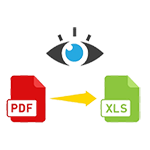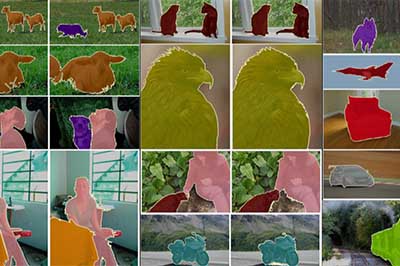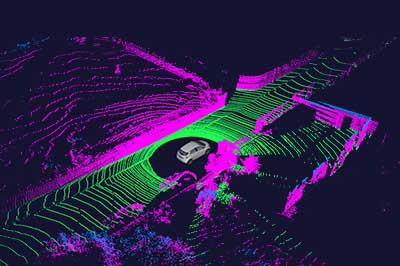COMPUTER VISION
Sisco provides fast computer vision development, as well as AI models ready to deploy in the cloud. We can expand automate text mining, examine imagery and video in real time, content finding, and produce goods by embedding cloud vision resources in your apps. Our visual data processing labeling content with objects and concepts, create image narratives, balance content, and extract text for individuals and people in physical spaces.
Sisco specialize in computer vision algorithm development to energize innovation. We have world renowned ML engineers and infrastructure architects to serve you. Our image recognition platform can be deployed on-premises or in the cloud, it can assimilate with your active systems and can acclimate to distinctive environments.
Our Computer Vision team can customize computer vision services to support your requirements and infrastructure.Sisco has devoted passion to fulfill your CV requirements that will increase your business operations and support your strategic goals.

Diverse Deployment
Run Computer Vision on premise or in the cloud.

Image Understanding
Extract from a powerful collection of thousands of concepts and objects from visual assets.

Text Extraction (OCR)
Pull handwritten and printed and text from images and documents with multi-language and writing styles simultaneously.

Spatial Analysis
Examine people’s movement in areas, in real time for social distancing, badge detection and occupancy counting.
Image Recognition & Object Recognition
Sisco can help you quickly create computer vision solutions with visual AI. From inventory to authentication, microscopic to satellite,
actions to radiology, by training our AI for object recognition and image recognition in still images or video, we generate results for our customers.
The objective of image recognition is to classify an entire image into a particular category. For example, if we have a dataset containing images of children,
an image recognition model may categorize these images into groups based on their race. Every image in the dataset on which the model is trained is given a label that denotes its contents.
The purpose of object recognition is to identify the existence of particular objects in an image. If dataset contained images of two or more children an object recognition model would
identify the race and the position of the depicted in the image. Every image in the dataset on the model is trained and given one or more shapes or contain the label and position of each object in the image.


Visual Data - Image Segmentation Models
Image segmentation separates visual images into significant parts to make machines understand, process, and analyze them with ease.
There are many applications for image segmentation, such as objective tracking, facial recognition, map image processing and more.

Object Segmentation in 3D Point Clouds
Point clouds are used in 3D modeling utilizes point clouds to generate precise models of real items or events. VR, computer graphics, and communication utilize this technology.
Sisco CV developers and architects will help you produce deep absorption real-world 3D models with simplicity.

Automatic Image Tagging Multi-Object Detection Models
Machines are taught to identify various objects and train algorithms to automatically identify people and objects in an image with neural networks.
Multi-object detection is beneficial for social media platforms, and it enhances customer experience in logistics and supply chain.

OCR & Data Capturing Task Automation
The volume of big data is significantly increasing for organizations. Data discovery and manipulation have become essential parts of business workflows.
Sisco has the experience and resources to find, capture, and extract data automatically from unstructured documents and increase operations.

Product Matching - Image Similarity Search
Image similarity search quickly enable customers to locate related products established on visual characteristics such as size, shape,
color, consistency, and more, throughout the internet and various software.
Product-matching can support massive amounts of formless data more efficiently to decrease time, cost and increase ROI.

Facial Recognition Technology
Live-captured or scanned images can be matched to collected faceprints to authenticate an identity, expedite access control and improve security.
Our deep learning algorithms will automate the process of assembling and storing data on facial features and forming data-based faceprints.
Pose Estimation Model
Human pose estimation is to predict, identify, and track the presence and location of a person and their movement to help you provide better services.
Pose estimation models can be applied to robotics, tracking systems,
crowd counting, gaming and more. Sisco Computer Vision team can develop a pose estimation model that can be integrated into your resources.




















